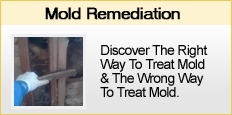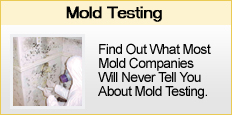MOLD REMEDIATION
 |
 |
 |
Mold Remediation & Removal in New Jersey
Investigating The Wrong & Right Ways to Perform Mold Remediation
Maybe you’re thinking about buying a home that is contaminated with mold. Or maybe the mold in your home has been growing for years and the problem has gotten out of control. Regardless of your situation, it is critical that you understand the various ways mold remediation is done in NJ.
There is a right and wrong way to do everything, and mold remediation is no exception to this rule. So we have comprised a list of the most common practices in New Jersey. We will highlight the pros and cons of each method, starting with the worst, and ending with the best.
The 2 Worst Ways to Perform Mold Remediation in New Jersey
1) Fogging aka Fumigation – This method of killing mold is not only dangerous but highly ineffective. How fogging works is simple. Moldicides are diluted with water, put under immense pressure, and sprayed through a nosel that turns them into a mist. This mist lingers around your home for hours or days, in effort to kill mold.
Pros – For the homeowner, there are none. For the company, they make a lot of money by using an unregulated technique that is highly ineffective.
Cons – In order for a fog to be effective for mold remediation, it must be a highly concentrated substance. However, these compounds are being diluted in 2 different stages of the process. First, they are diluted with water before they can be fumigated (turned into a dog).
Second, after this substance is turned into a dog, it is sprayed into the air, so it becomes further diluted with the air itself. All the companies who employ fumigation claim to use “safe, proprietary” compounds. Yet they never tell you what the compounds are. Considering that these chemicals are being sprayed all over your home… wouldn’t you like to know what they are?
Third, mold remediation companies who use fogging never refer an outside company to do PCT (post clearance testing). If it ever happens, its incidental. And the few cases we’ve seen PCT done, there was no significant reduction of mold spores in the home.
2) Dry Ice Blasting – This method of mold remediation uses dry ice (solid carbon dioxide) under immense pressure to “blast” the mold off the surface of a material! Its is extremely expensive, but it is taunted as one of the safest and most effective ways to remediation mold. So whats the real story behind dry ice blasting?
Pros – Dry ice blasting does actually kill mold. It is very quick, very safe, and very easy for a mold remediation company to perform.
Cons – It only removes cosmetic mold (surface mold) and for substrates like wood and concrete, it leaves the rhyzoids fully in tact (the roots of mold). Furthermore, when a surface is subject to such extreme pressures, it tends to fracture the surface leaving behind wider, deeper, pores. So in the long run, surfaces that are blasted with dry ice become better surfaces for mold to grow on. Unless like we stated, the surfaces are resurfaced (encapsulated) during the mold remediation process. The problem is, since dry ice blasting already costs $10,000-$30,000, adding encapsulation would raise the prices even more. It would turn an already expensive process into an absurdly expensive process. And it would also make the entire process redundant since encapsulation by its own, is sufficient enough to solve the problem.
This is why MMRG recommends against dry ice blasting. For mold remediation, it is simply too expensive, and efficacy has shown it is never worth the price.
The #1, Time Testing Technique For Performing Mold Remediation

